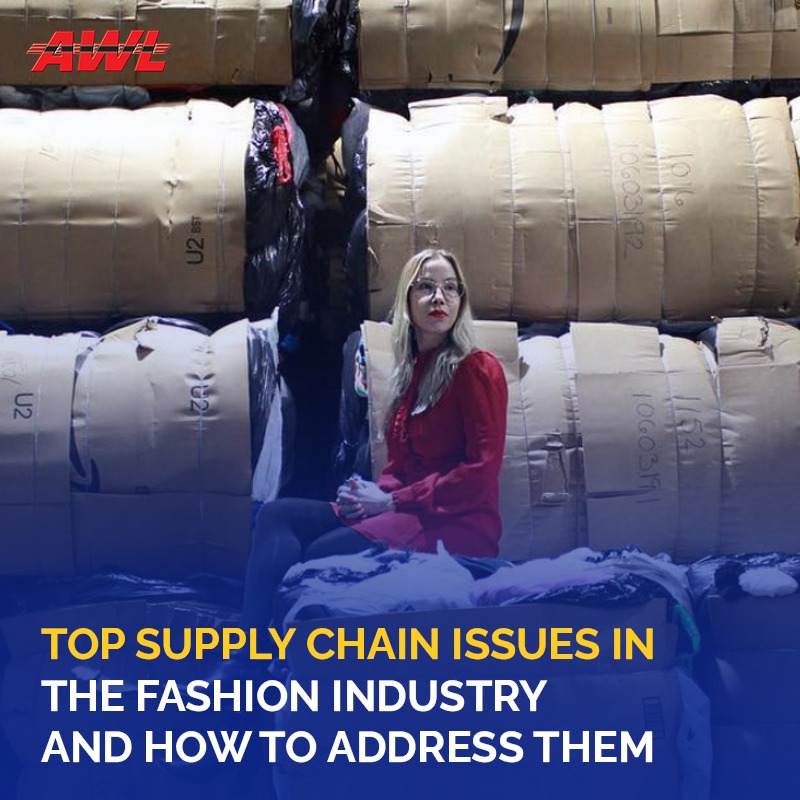

The apparel industry is generally regarded as one with the most complicated and challenging supply chain demands. It is also one of those industries that employ millions of people globally. According to a report, the apparel industry is set to grow by up to 50% by the year 2025, making its total worth over $2.25 trillion dollars! Isn’t that insane?
Being such a huge industry, the supply chain processes within it are bound to be complex. The industry is massive and demands a streamlined operating supply chain to ensure the smooth functioning of the processes within the industry.
Since the nature of the apparel industry demands that the sourcing, manufacturing, and delivery of apparel products is conducted across locations, the dependence of this industry on high-quality, reliable logistics is heavy.
There are also certain factors that contribute to making the fashion supply chain one of its kind. We are rapidly moving towards an industry that gets frequently changing demands for new and better products from consumers. While factors like seasons make the clothing demand predictable, today, there are more people who buy clothing because they simply like it and not because of its functionality.
So, apparel businesses are consistently competing to meet customer demand with an adequate supply of trendy fashion clothing. And to do the same, they need a fast-moving logistics and supply chain network which they can rely on.
As an apparel business if you make the simple mistake of failing to upgrade your supply chain, you could lose to your competition. Apparel is a growing industry, in which more and more industry players are emerging by the day. Today, customer has more choice than they ever did. And if you fail to deliver them the desired apparel on time, some other player from another market could capture your customers and improve their business. This is why it is important to pay attention to your supply chain and make consistent upgrades to match the needs of the time.
Here are the top seven apparel supply chain problems that are frequently encountered by apparel businesses:
Volatility is the nature of the apparel industry. The fashion business is famously unpredictable, no matter how favorable the circumstances are, one of the main issues emerging from unpredictability is the likely cost losses. When there is volatility in demand, it leads to business losses, no matter how great your production is.
In the kind of market that we live in today, one piece of clothing could be the most trendy today and just not the other day. If, as a business, you ordered the stock of the most popular fashion apparel, and it goes out of trend soon enough without you making the sales for the same, you will be left paying for stock that you'll unavoidably need to sell at a scaled-down cost. Your supply chain strategy must be strong enough to withstand volatility in demand.
Similarly, production volatility is another problem for various apparel businesses. Problems in the production of apparel can also create volatility in the market. Some of the problems that can happen with production are stock shortages, defective production, etc. These are serious problems that can lead to the customers being unhappy, and to you losing business, eventually, if you do not take production volatility seriously.
As a measure of precaution to dodge production volatility, you can team up with multiple suppliers for the same product. That way, in case one of you have problems with one of your suppliers, you could rely on the other one and maintain a steady flow of supply to meet your customer demands.
Lack of transparency in the apparel business is one of the major contributors to supply chain disruptions. It can even cause loss of trust, and subsequently, loss of business. Your business should have a procedure set up for guaranteeing that your providers are living up to ethical business practices. Not to be mentioned, your business itself should have a fairly transparent supply chain.
Many apparel businesses do not realize that having a transparent supply chain doesn’t “expose” them, it does the opposite. It improves the internal operations of your own business. With transparency, you get clearer business insights, which you can analyze for the benefit of your own business.
And in order to improve transparency in the supply chain, it is important to optimize your supply chain operations. For that, you might consider taking the help of a supply chain specialist like AWL India.
Even inconsequential transportation issues might significantly affect the supply chain network and how you fulfill customer needs. It is true that transportation malfunctions might not occur daily, but when they do, they have the potential to create complete havoc.
A few hours excess at one of your wholesaler's warehousing centers, for instance, will affect item accessibility for you and may even promote your business to pass up the opportunity of losing business to your competitors. The apparel supply chain is fast, where every minute counts. If you don’t deliver the customer the clothing, somebody else will. Deal with it.
To minimize such a disruption, you should work with reliable logistics experts that provide backup options. And more importantly, lesser chances of transportation problems in the first place.
It is a common practice in the apparel industry to re-appropriate the production and manufacturing to low-wage nations, most frequently to Asia and Africa. This is done to maintain the overall expenses of the apparel businesses.
While it may save you the costs, it might lead you to lose sales. Let’s picture this - transferring production to another country will likely take time, which in turn, will result in the final piece of clothing arriving at the stores where your customer is. It is quite possible (unless you’re a big, iconic brand) that the customer buys from another store because of the unavailability of the product at your store during this period of time.
In an industry where there are rapidly fluctuating interests, this could be tricky for your business. Hence, you should adjust cost contemplations against how indispensable of an opportunity you have for your business.
The solution for this supply chain problem could be nearshoring. Instead of sending your raw materials to a far-off country, you could choose a country which is nearer and where production will be relatively cheaper.
The raw materials for the production of your attire designs might or might not be available at the time you require them. And there’s also an emerging interest in the use of alternative raw materials for clothing. While a huge volume of current attires is manufactured using fabrics that are synthetic in nature, lately, there has been an increased demand from eco-friendly shoppers for the use of more organic fibers in the clothing. This is because organic fibers essentially have a diminished ecological effect, and are also good for the skin.
As an apparel business, you should keep an eye on where your or your supplier’s raw materials come from. At the same time, you should know where your customer’s interests lie. Or where you see a possibility for a market.
Demand forecasting in the apparel industry is already complicated for what it's worth. Regardless of whether you sell items that are demanded according to seasons, knowing what to stock in your warehouse as an apparel business can be a big challenge.
Demand forecasting for apparel is tricky. If you’re a mid-level seller, you should keep an eye on what the big fashion houses are selling - as that is most likely to get trendy. You can also alternatively create your own demand and trends for your designs - but that would mean being extremely ambitious - which is a good thing but also kind of risky in the apparel business.
A hybrid supply chain model, like Zara’s or H&M’s can help you save on the risk, and ensure that the items that you stock sell. You could also drive demand urgency by listing down offers, creating an environment for exclusivity, etc.
Waste management in the apparel industry is evidently the biggest challenge. Every day, the industry produces tonnes and tonnes of apparel waste.
While as an independent business, you probably feel that it has not got a lot to do with your business, reports suggest that collectively, the industry is responsible for a significant amount of waste production, as well as environmental deterioration.
During the manufacturing of the apparel, there are byproducts that will go to landfills or be scorched or unloaded in some random place. If you are an ignorant business or your providers and their plants are viewed as inefficient, your business will endure the worst result of it - the reputational harm that comes with ignorant business practices.
Read More: Artificial Intelligence in Fashion Industry
Although the apparel industry has a supply chain that is quite unforgivable, it is still possible to enjoy fairly seamless supply chain operations by taking the help of supply chain professionals. Countering the issues in the apparel supply chain has evident advantages that you, as an apparel business, would want to invest in. AWL India, using the best technology and resources, works to guarantee improvements in your apparel supply chain.

